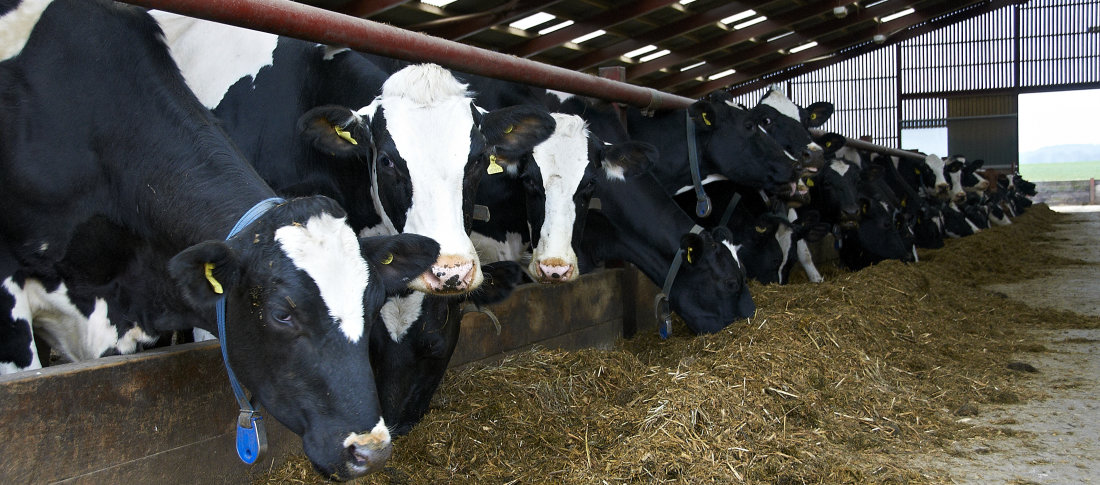How wetter silage can affect your herd
Silage boasts a rich history in British agriculture, having been around since 1,500 BC, however, it became more widespread in Europe in the 1870s when German farmers turned to fermentation to preserve pasture for their livestock. Fast forward to the present day, and silage continues to play a vital role in providing dairy cattle with essential nutrition.
This year, UK dairy farmers may experience wetter silage than usual, potentially affecting the quality of this essential livestock feed. We spoke to Peter Smith, Business Manager at Volac International, to learn more about how farmers can circumvent this issue with the use of Megalac.
Why silage matters for dairy cattle
Rich in nutrients and irresistible: Good silage owes its nutritional value to the fermentation process, which converts grass sugars into acids. These acids preserve the nutrients, preventing spoilage microorganisms from depleting them. The result is a delectable and nutrient-rich feed that dairy cows find highly appealing and that supports their rumen health.
Superior nutrient preservation: In comparison to hay, silage retains more nutrients from the original pasture, making it a more efficient feed source. Hay production can be highly dependent on unpredictable UK weather conditions.
Advantages of silage for British farmers
Cost-effective nutrition: Silage offers a cost-effective and sustainable means of providing essential nutrients to your herd. It's a locally sourced feed that helps manage production costs, facilitating the maintenance of healthy and productive cattle.
Preserving pasture resources: During spring, pastures can grow faster than your herd can graze. Harvesting excess pasture for silage allows you to store valuable nutrients for the less productive autumn and winter periods when pastures are scarce. Unlike hay, good silage only needs a short window of favourable weather to be advantageous in its usage.
Space-efficient storage: Silage requires significantly less storage space compared to loose hay, making it ideal for farms with limited storage capacity. Even baled hay consumes more space than grass silage.
The significance of net energy in silage
Maintaining body condition and optimising milk yields are primary goals for British dairy farmers. Achieving these goals necessitates careful management of diets and nutritional intake for our herds. Net energy, also known as metabolisable energy, quantifies how much energy from food intake an animal utilises for productive purposes.
The net energy content of silage can vary, influenced by factors such as the original pasture's quality, the fermentation process, and storage conditions. Typically, dry matter grass silage provides 9-12 MJ/kg, which is roughly equivalent to common cereals like wheat and maize, sugar beet pulp, and molasses.
The ripple effect on milk yields
Wet silages present many problems to dairy cows. Firstly, wetter silages will be more acidic - as you “pickle” the water, and more water = more acid. If the silage is wet and lush, which means there’s a lack of fibre, you then have a “perfect storm” for the rumen - lots of acid, and little fibre to encourage cudding to help overcome the acidity. Wetter silages can in some feed systems limit dry matter intake by reducing the volume of dry matter an animal is able to eat due to its bulk.
Boosting milk yields with fat supplements
While silage serves as a valuable nutritional resource for dairy cows, it may not fulfil all their nutrient requirements to achieve their full potential. This is where dietary supplements, particularly fat supplements, come into play.
Megalac can help with wetter silages as it doesn't produce any acid in the rumen so it’s a safe energy source to feed along with wet silage, either as a replacement for part of the cereal element of the ration - which cause the rumen pH to fall - or to boost the energy to cows struggling to achieve optimum dry matter intake.
Grass and silage offer cost-effective methods to maintain the health and productivity of your dairy herd.
However, for maximising milk quality and yields, it's crucial to incorporate reliable dietary supplements, like Megalac, to address the nutritional gaps that grass and silage alone may not fulfil.
